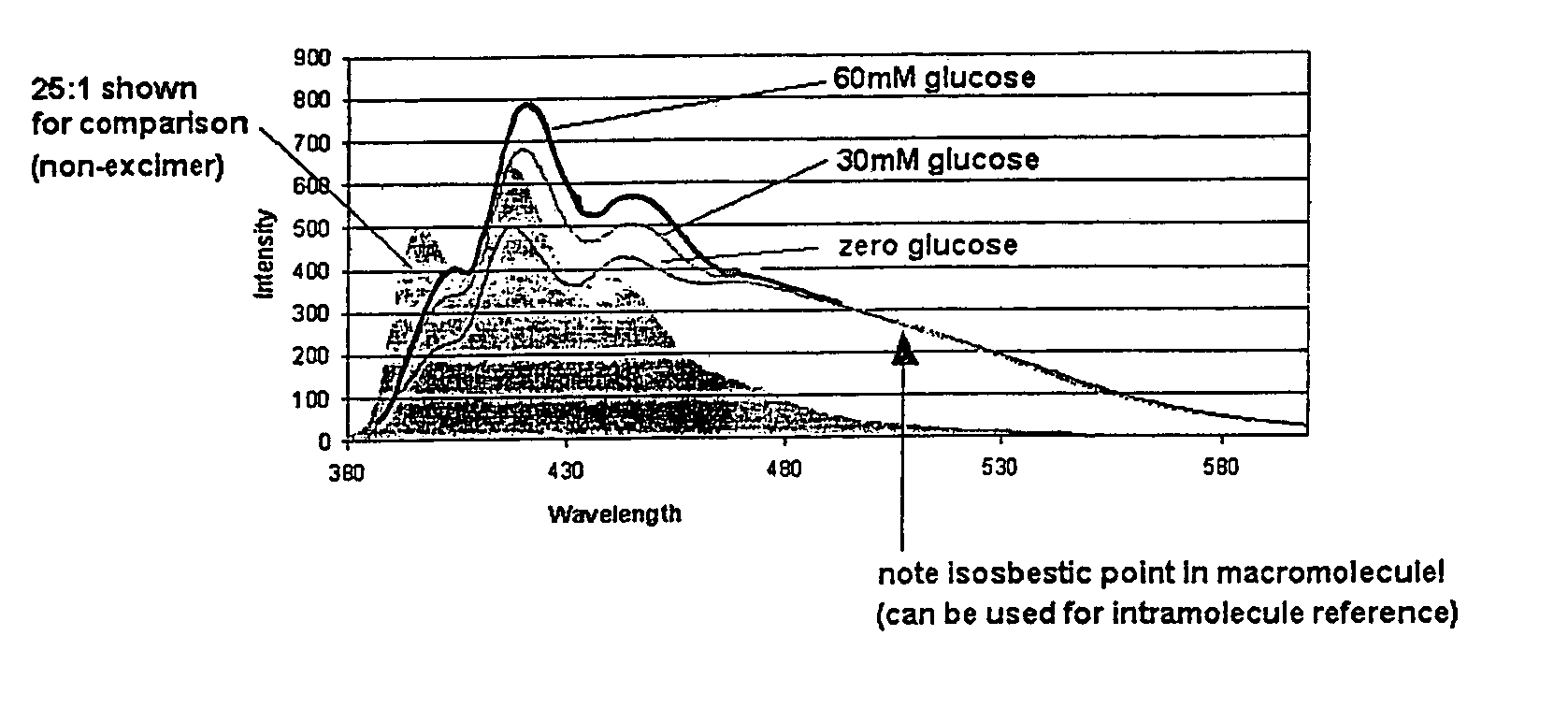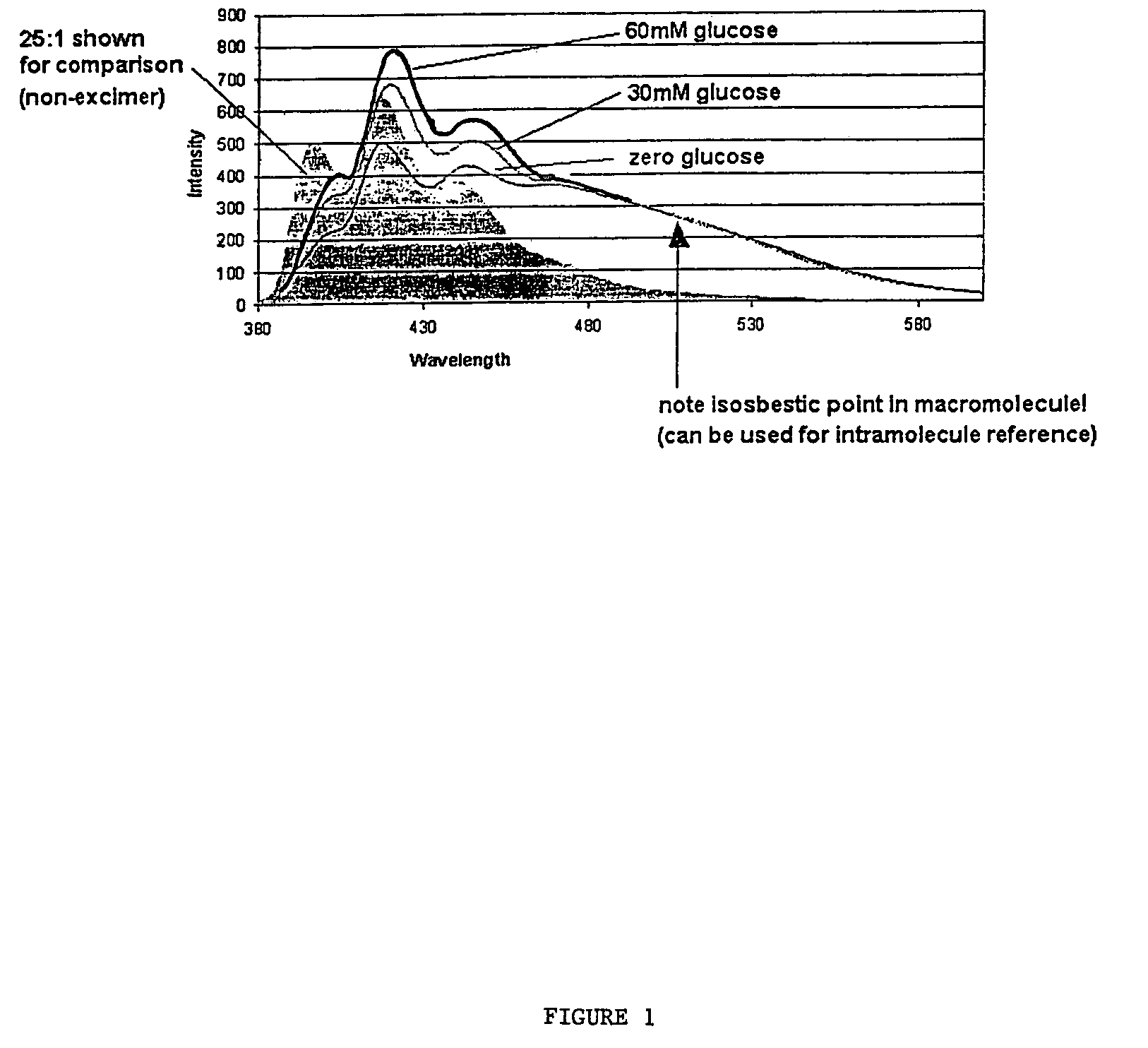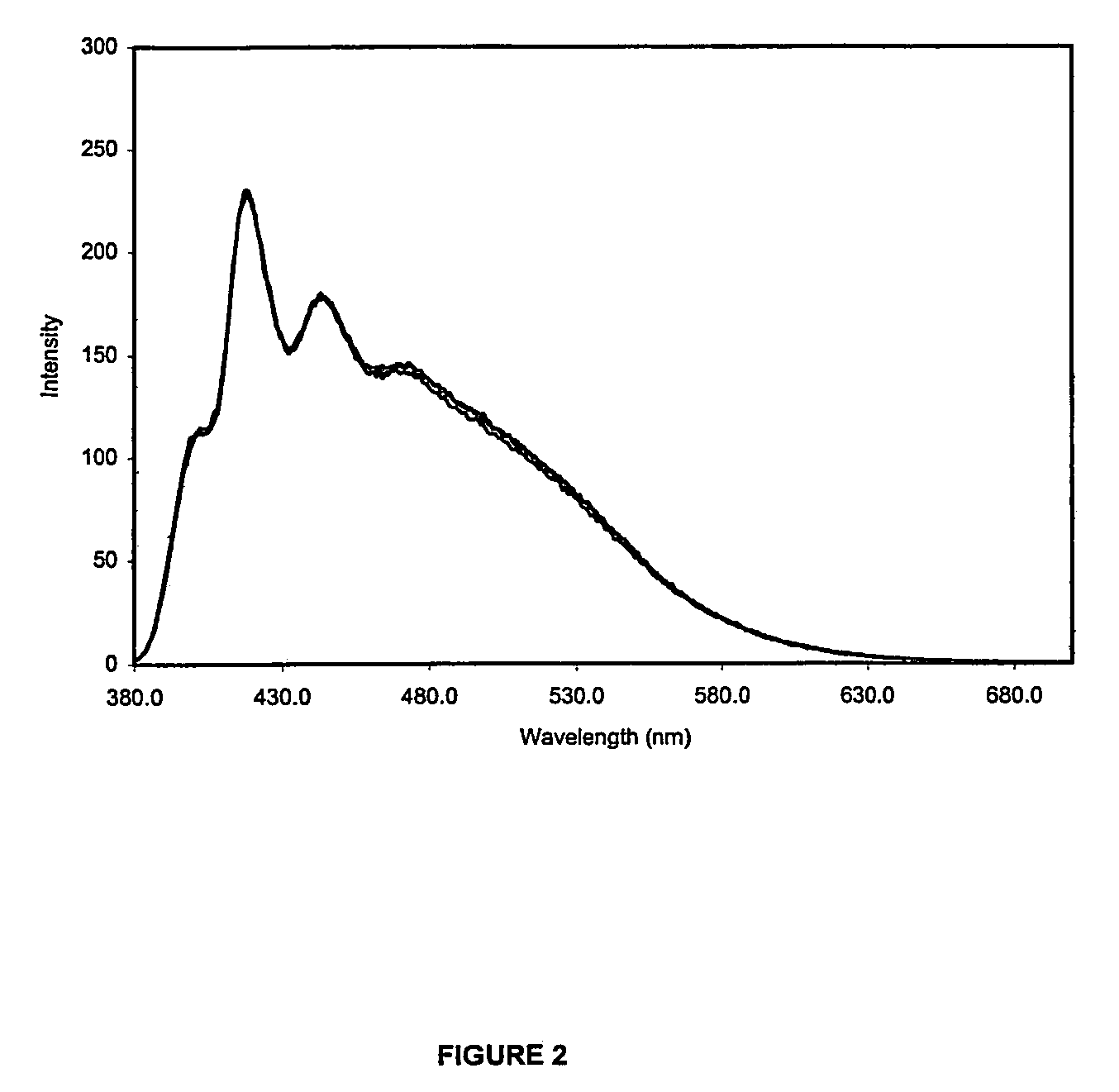Detection of Analytes in aqueous environments
- Summary
- Abstract
- Description
- Claims
- Application Information
AI Technical Summary
Benefits of technology
Problems solved by technology
Method used
Image
Examples
example 1
a) Preparation of 9-[(methacryloylaminopropylamino) methyl]anthracene
(A) One-Phase
[0064]To a suspension of N-(3-aminopropyl)methacrylamide hydrochloride (Polysciences, #21200) (11.82 g, 0.066 mole, 3.0 eq) and a trace of inhibitor DBMP (2,6-di-t-butyl-4-methylphenol) (10 mg) in chloroform (250 mL) stirring in an ice-water bath, diisopropylethylamine (25 mL, 18.55 g. 0.144 mole, 6.5 eq) was added dropwise in 20 minutes. The mixture was allowed to warm up to room temperature and cooled again in ice-water bath. A clear solution of 9-chloromethylanthracene (5.0 g, 0.022 mole) in chloroform (100 mL) was added dropwise over 1 hour. It was run at 25° C. for 1 hour, 50° C. for 12 hours and then 70° C. for 2 hours.
[0065]The mixture was washed with water (60 mL×4), and the aqueous layer was extracted with methylene chloride. The organic layers were combined, dried over Na2SO4, separated, and the solvent was removed under reduced pressure at 40° C. The crude material was then chromatographed o...
example 2
[0076]This example demonstrates a surprising and useful excimer effect present in connection with the 5:1 indicator macromolecule prepared in Example 1.
[0077]FIG. 1 depicts the emission spectra of the 5:1 indicator macromolecule when exposed to three concentrations of glucose (0 mM, 30 mM and 60 mM) after excitement by light at 365 nm. Also shown in the shaded region of FIG. 1 is the emission of the non-excimer 25:1 indicator macromolecule from Example 1. The excimer emission region shows an “isosbestic region” rather than an isosbestic point. It can be seen from FIG. 1 that the excimer emission region (the region where the 0 mM, 30 mM and 60 mM glucose lines overlap) is not responsive to changes in glucose concentration (just like an isosbestic point). The excimer emission region begins approximately 100 nm downfield from the peak responsive wavelength of the anthracene derivative modulation. Except for glucose, the excimer is responsive to all other aspects of the system, such as ...
example 3
[0085]The synthesis of a suitable lanthanide chelate indicator component monomer is depicted in FIG. 3. Compounds (1) and (2) are commercially available from Macrocyclics, Richardson, Tex. (compound (2) is known as p-NH2-Bz-DOTA). The end product (9) may be co-polymerized with one or more other monomers to form an indicator macromolecule.
PUM
| Property | Measurement | Unit |
|---|---|---|
| Concentration | aaaaa | aaaaa |
| Molar ratio | aaaaa | aaaaa |
| Hydrophilicity | aaaaa | aaaaa |
Abstract
Description
Claims
Application Information
 Login to View More
Login to View More - R&D
- Intellectual Property
- Life Sciences
- Materials
- Tech Scout
- Unparalleled Data Quality
- Higher Quality Content
- 60% Fewer Hallucinations
Browse by: Latest US Patents, China's latest patents, Technical Efficacy Thesaurus, Application Domain, Technology Topic, Popular Technical Reports.
© 2025 PatSnap. All rights reserved.Legal|Privacy policy|Modern Slavery Act Transparency Statement|Sitemap|About US| Contact US: help@patsnap.com



